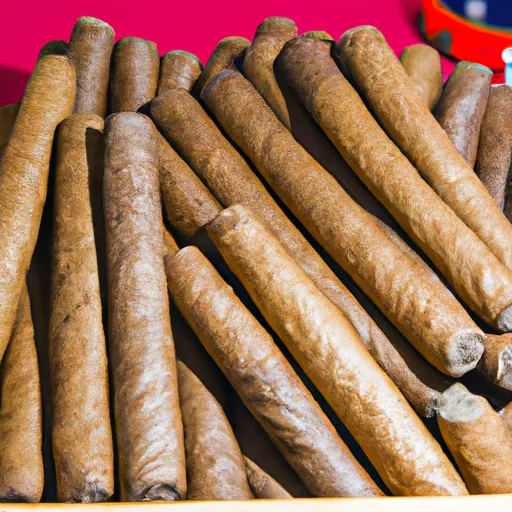little cigars

As a cigar aficionado, I have always been intrigued by the allure of little cigars. These tiny versions of their larger counterparts have a charm of their own and have been gaining popularity in recent years. In this article, I will delve into the world of little cigars and shed some light on what makes them unique.
What are little cigars?
First and foremost, let’s define what a little cigar is. It is essentially a smaller version of a regular cigar, but with some key differences. Little cigars are machine-made, whereas traditional cigars are hand-rolled. This results in a shorter and thinner cigar, with a length of around 3 inches and a ring gauge of 20 or less. They are also typically wrapped in homogenized tobacco leaf, whereas regular cigars use natural tobacco wrappers.
History of little cigars
Little cigars may seem like a recent addition to the cigar market, but their origins can be traced back to the mid-19th century. With the rise of cigarette manufacturing in the late 1800s, tobacco companies began experimenting with creating a smaller version of cigars that were more akin to cigarettes in terms of size and shape. These were initially marketed as “cigarette cigars.”
In the 1970s, little cigars gained prominence as a cheaper alternative to regular cigars due to the increase in taxes on tobacco products. This led to the creation of new brands and flavors, making little cigars more accessible and appealing to a wider audience.
Today, little cigars have carved out their own niche in the cigar world, with a dedicated following and a variety of brands and flavors to choose from.
What makes little cigars unique?
There are a few factors that set little cigars apart from traditional cigars. The first, as mentioned earlier, is their size. Their small and compact nature makes them convenient to carry around and smoke on the go. They are also a less intimidating option for those who are new to cigar smoking and may find regular cigars overwhelming.
Another distinguishing feature is their milder flavor profile. Little cigars are often seen as a gateway to cigar smoking, as they offer a more approachable taste compared to regular cigars. However, this does not mean that they lack complexity or depth. Many manufacturers have perfected the art of blending and infusing little cigars with unique flavors, making them a treat for the taste buds.
Types of little cigars
Just like regular cigars, little cigars come in various types and styles. The most common types are filtered, unfiltered, and tipped. Filtered little cigars are akin to cigarettes, with a filter at the end to trap tar and nicotine. Unfiltered little cigars are essentially mini versions of regular cigars, with no filter. Tipped little cigars feature a plastic or wooden tip at the end, which adds a touch of elegance and also protects your lips from direct contact with the tobacco.
Flavors and aromas
One of the most exciting aspects of little cigars is the wide range of flavors and aromas they come in. From classic tobacco flavors to fruity and dessert-inspired ones, there is something for everyone. Some popular flavors include vanilla, chocolate, cherry, and peach, just to name a few.
I personally love experimenting with different flavors and have found that little cigars are a great way to satisfy my cravings without having to indulge in a calorie-laden dessert. They are also a hit at social gatherings, where I can offer my friends a variety of flavors to try and share my love for little cigars with them.
Pairings with little cigars
Pairing cigars with the right beverage can enhance the overall smoking experience, and the same goes for little cigars. Their milder flavors and shorter smoking time make them ideal for pairing with a wide range of drinks. You can never go wrong with a classic cup of coffee or a smooth whiskey, but feel free to explore other options such as tea, wine, or even a cold beer.
Tips for smoking little cigars
Smoking a little cigar may seem like a simple task, but there are a few things to keep in mind to fully enjoy the experience. Firstly, make sure to properly light and toast the cigar. Use a butane lighter or matches, as other types of lighters may leave a chemical taste on the cigar. Secondly, take your time and savor the flavors. Little cigars have a shorter smoking time, but this doesn’t mean you have to rush through it. And finally, don’t inhale the smoke. Little cigars are meant to be enjoyed through the mouth, not the lungs.
In conclusion, little cigars may be small in size, but they pack a big punch in terms of flavor and enjoyment. From their humble beginnings to their now established presence in the cigar market, little cigars have come a long way and have gained a loyal following. I hope this article has piqued your interest in trying out these unique and pocket-sized cigars. So, go ahead, grab a little cigar, and indulge in a world of delicious flavors and aromas. Cheers!